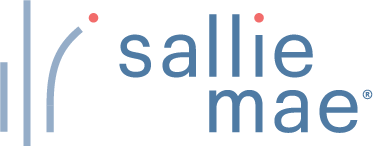
Take advantage of free aid through the FAFSA and merit-based programs before considering student loans.

Cecilia Clark
Assistant Assigning Editor | Education financing products, Veteran's benefits, Student and graduate finances
Cecilia Clark is an editor on the loans team. She specializes in student loans and manages product reviews and roundups. Previously, she worked as a freelance writer and developed communications strategies for cybersecurity firms. Cecilia has also worked in post-secondary education, elevator operations management and sales and military nuclear command control, maintenance management and public affairs.
Lead Assigning Editor Des Toups
Lead Assigning Editor | Student loans, repaying college debt, paying for college
Des Toups was a lead assigning editor who supported the student loans and auto loans teams. He had decades of experience in personal finance journalism, exploring everything from car insurance to bankruptcy to couponing to side hustles.
Fact CheckedMany, or all, of the products featured on this page are from our advertising partners who compensate us when you take certain actions on our website or click to take an action on their website. However, this does not influence our evaluations. Our opinions are our own. Here is a list of our partners and here's how we make money.
Financial aid for graduate school includes grants, scholarships, fellowships, assistantships and loans.
Exhaust all opportunities for free aid before considering student loans.If you take out student loans, borrow federal direct loans first. For additional funding, compare offers between federal PLUS loans and private loans to see where you’ll get the best deal.
If you’re considering graduate school, make sure you have a funding plan in place ahead of time. Costs for graduate school can vary greatly depending on the type and length of the program, but there are opportunities to help cut down out-of-pocket costs.
Graduate students can get financial aid through:
FAFSA: The Free Application for Federal Student Aid provides access to federal, state and some school-based grants.
Organization grants: Industry-specific organizations may provide grants to those studying in relevant fields.
Scholarships: State governments, schools and private organizations may provide scholarships for academic excellence or other factors, like studying in high-needs fields or increasing diversity.
Fellowships: Schools, private organizations and government entities offer fellowships based on field of study and academic performance in exchange for research activities.
Assistantships: Schools may award living stipends and tuition waivers to full-time students in exchange for work.
Employer tuition assistance: Employers may offer to reimburse their employees’ tuition expenses as an employment benefit.
Here’s who qualifies and how to apply for each type of aid.

NerdWallet's ratings are determined by our editorial team. The scoring formula for student loan products takes into account more than 50 data points across multiple categories, including repayment options, customer service, lender transparency, loan eligibility and underwriting criteria.
College Ave Student Loans products are made available through Firstrust Bank, member FDIC, First Citizens Community Bank, member FDIC, or M.Y. Safra Bank, FSB, member FDIC.. All loans are subject to individual approval and adherence to underwriting guidelines. Program restrictions, other terms, and conditions apply. As certified by your school and less any other financial aid you might receive. Minimum $1,000. Rates shown include autopay discount. The 0.25% auto-pay interest rate reduction applies as long as a valid bank account is designated for required monthly payments. If a payment is returned, you will lose this benefit. Variable rates may increase after consummation. This informational repayment example uses typical loan terms for a freshman borrower who selects the Flat Repayment Option with an 8-year repayment term, has a $10,000 loan that is disbursed in one disbursement and a 7.78% fixed Annual Percentage Rate (“APR”): 54 monthly payments of $25 while in school, followed by 96 monthly payments of $176.21 while in the repayment period, for a total amount of payments of $18,266.38. Loans will never have a full principal and interest monthly payment of less than $50. Your actual rates and repayment terms may vary. This informational repayment example uses typical loan terms for a freshman borrower who selects the Deferred Repayment Option with a 10-year repayment term, has a $10,000 loan that is disbursed in one disbursement and a 8.35% fixed Annual Percentage Rate (“APR”): 120 monthly payments of $179.18 while in the repayment period, for a total amount of payments of $21,501.54. Loans will never have a full principal and interest monthly payment of less than $50. Your actual rates and repayment terms may vary. Information advertised valid as of 9/3/2024. Variable interest rates may increase after consummation. Approved interest rate will depend on the creditworthiness of the applicant(s), lowest advertised rates only available to the most creditworthy applicants and require selection of full principal and interest payments with the shortest available loan term.
College Ave Student Loans products are made available through Firstrust Bank, member FDIC, First Citizens Community Bank, member FDIC, or M.Y. Safra Bank, FSB, member FDIC.. All loans are subject to individual approval and adherence to underwriting guidelines. Program restrictions, other terms, and conditions apply. As certified by your school and less any other financial aid you might receive. Minimum $1,000. Rates shown include autopay discount. The 0.25% auto-pay interest rate reduction applies as long as a valid bank account is designated for required monthly payments. If a payment is returned, you will lose this benefit. Variable rates may increase after consummation. This informational repayment example uses typical loan terms for a freshman borrower who selects the Flat Repayment Option with an 8-year repayment term, has a $10,000 loan that is disbursed in one disbursement and a 7.78% fixed Annual Percentage Rate (“APR”): 54 monthly payments of $25 while in school, followed by 96 monthly payments of $176.21 while in the repayment period, for a total amount of payments of $18,266.38. Loans will never have a full principal and interest monthly payment of less than $50. Your actual rates and repayment terms may vary. This informational repayment example uses typical loan terms for a freshman borrower who selects the Deferred Repayment Option with a 10-year repayment term, has a $10,000 loan that is disbursed in one disbursement and a 8.35% fixed Annual Percentage Rate (“APR”): 120 monthly payments of $179.18 while in the repayment period, for a total amount of payments of $21,501.54. Loans will never have a full principal and interest monthly payment of less than $50. Your actual rates and repayment terms may vary. Information advertised valid as of 9/3/2024. Variable interest rates may increase after consummation. Approved interest rate will depend on the creditworthiness of the applicant(s), lowest advertised rates only available to the most creditworthy applicants and require selection of full principal and interest payments with the shortest available loan term.
Min. credit score
Go to lender siteon College Ave's
Visit this lender's site to take next steps.

NerdWallet's ratings are determined by our editorial team. The scoring formula for student loan products takes into account more than 50 data points across multiple categories, including repayment options, customer service, lender transparency, loan eligibility and underwriting criteria.
Lowest rates shown include the auto debit. Advertised APRs for undergraduate students assume a $10,000 loan to a student who attends school for 4 years and has no prior Sallie Mae-serviced loans. Interest rates for variable rate loans may increase or decrease over the life of the loan based on changes to the 30-day Average Secured Overnight Financing Rate (SOFR) rounded up to the nearest one-eighth of one percent. Advertised variable rates are the starting range of rates and may vary outside of that range over the life of the loan. Interest is charged starting when funds are sent to the school. With the Fixed and Deferred Repayment Options, the interest rate is higher than with the Interest Repayment Option and Unpaid Interest is added to the loan’s Current Principal at the end of the grace/separation period. To receive a 0.25 percentage point interest rate discount, the borrower or cosigner must enroll in auto debit through Sallie Mae. The discount applies only during active repayment for as long as the Current Amount Due or Designated Amount is successfully withdrawn from the authorized bank account each month. It may be suspended during forbearance or deferment. Advertised APRs are valid as of 9/10/2024. Loan amounts: For applications submitted directly to Sallie Mae, loan amount cannot exceed the cost of attendance less financial aid received, as certified by the school. Applications submitted to Sallie Mae through a partner website will be subject to a lower maximum loan request amount. Miscellaneous personal expenses (such as a laptop) may be included in the cost of attendance for students enrolled at least half-time. Examples of typical costs for a $10,000 Smart Option Student Loan with the most common fixed rate, fixed repayment option, 6-month separation period, and two disbursements: For a borrower with no prior loans and a 4-year in-school period, it works out to a 10.28% fixed APR, 51 payments of $25.00, 119 payments of $182.67 and one payment of $121.71, for a Total Loan Cost of $23,134.44. For a borrower with $20,000 in prior loans and a 2-year in-school period, it works out to a 10.78% fixed APR, 27 payments of $25.00, 179 payments of $132.53 and one payment of $40.35 for a total loan cost of $24,438.22. Loans that are subject to a $50 minimum principal and interest payment amount may receive a loan term that is less than 10 years. A variable APR may increase over the life of the loan. A fixed APR will not.
Lowest rates shown include the auto debit. Advertised APRs for undergraduate students assume a $10,000 loan to a student who attends school for 4 years and has no prior Sallie Mae-serviced loans. Interest rates for variable rate loans may increase or decrease over the life of the loan based on changes to the 30-day Average Secured Overnight Financing Rate (SOFR) rounded up to the nearest one-eighth of one percent. Advertised variable rates are the starting range of rates and may vary outside of that range over the life of the loan. Interest is charged starting when funds are sent to the school. With the Fixed and Deferred Repayment Options, the interest rate is higher than with the Interest Repayment Option and Unpaid Interest is added to the loan’s Current Principal at the end of the grace/separation period. To receive a 0.25 percentage point interest rate discount, the borrower or cosigner must enroll in auto debit through Sallie Mae. The discount applies only during active repayment for as long as the Current Amount Due or Designated Amount is successfully withdrawn from the authorized bank account each month. It may be suspended during forbearance or deferment. Advertised APRs are valid as of 9/10/2024. Loan amounts: For applications submitted directly to Sallie Mae, loan amount cannot exceed the cost of attendance less financial aid received, as certified by the school. Applications submitted to Sallie Mae through a partner website will be subject to a lower maximum loan request amount. Miscellaneous personal expenses (such as a laptop) may be included in the cost of attendance for students enrolled at least half-time. Examples of typical costs for a $10,000 Smart Option Student Loan with the most common fixed rate, fixed repayment option, 6-month separation period, and two disbursements: For a borrower with no prior loans and a 4-year in-school period, it works out to a 10.28% fixed APR, 51 payments of $25.00, 119 payments of $182.67 and one payment of $121.71, for a Total Loan Cost of $23,134.44. For a borrower with $20,000 in prior loans and a 2-year in-school period, it works out to a 10.78% fixed APR, 27 payments of $25.00, 179 payments of $132.53 and one payment of $40.35 for a total loan cost of $24,438.22. Loans that are subject to a $50 minimum principal and interest payment amount may receive a loan term that is less than 10 years. A variable APR may increase over the life of the loan. A fixed APR will not.